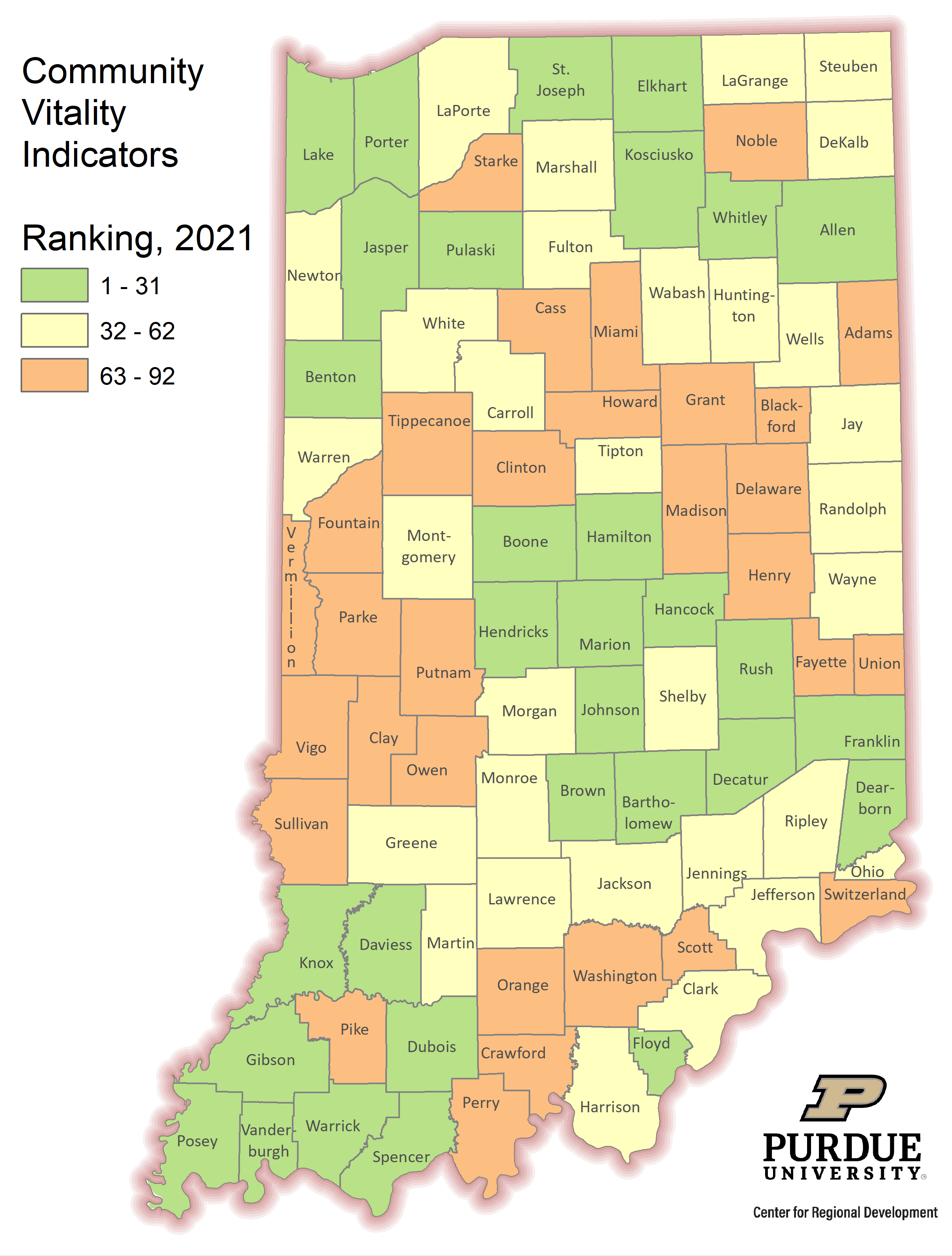Overview
At present, CVI is constituted of six variables. They are:
- Population Estimates
- Public School Enrollment as a % of Population Under 18 Years
- Public High School Graduation Rate
- Percent Population with Associates Degree or Higher
- Gross Assessed Value Per Capita
- Per Capita Personal Income
The Rural Indiana Stats site provides information on all six items for each of Indiana’s 92 counties. Aside from providing counties with statistical data on each item, counties are given a ranking on each variable. For example, a county with the best public high school graduation rate is assigned a rank of “1” while the one with the lowest high school graduation rate is given a rank of “92”. The final overall ranking of a county is simply the summation of its ranking on all six measures, arranged in ascending order (with the lowest number representing the top ranking and the highest number representing the county with the poorest ranking). For purposes of this analysis, all six variables are given equal weights.
Aside from the OCRA CVI (which provides users the ability to examine data on a year by year basis), the OCRA CVI (7 Year) option allows the user to see the performance of a county on all six OCRA CVI measures over a five-year period. The next CVI indicator includes five of the six variables included in the OCRA CVI, but uses per capita market income instead of the per capita personal income. It is labeled CVI Option 2. CVI Option 3 includes both the per capita personal income and the per capita market income, as well as the other measures included in the OCRA CVI. Finally, CVI Option 3 (7 Year) includes the same the data displayed in CVI Option 3, but provides a five-year view of the changes taking place in each of the variables for each Indiana County.
Rankings by Geographic Classification
Aside from highlighting a county’s CVI ranking relative to other counties in Indiana, the site also ranks the county within its specific geographic classification (that is, urban, mixed, or rural). This second alternative, for example, allows you to determine how a rural county ranks relative to all other rural counties in Indiana, or how an urban county ranks when compared to all other urban counties in Indiana. This second option may be more meaningful if you want to assess how your county stacks up relative to “peer” counties in the state.
